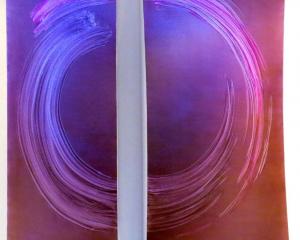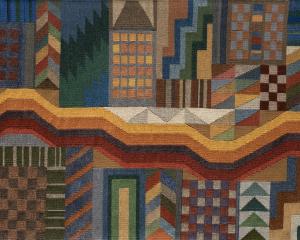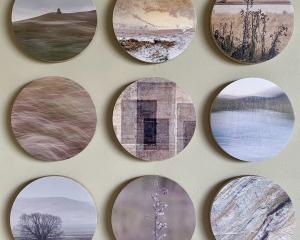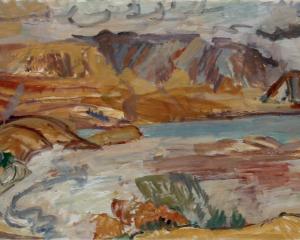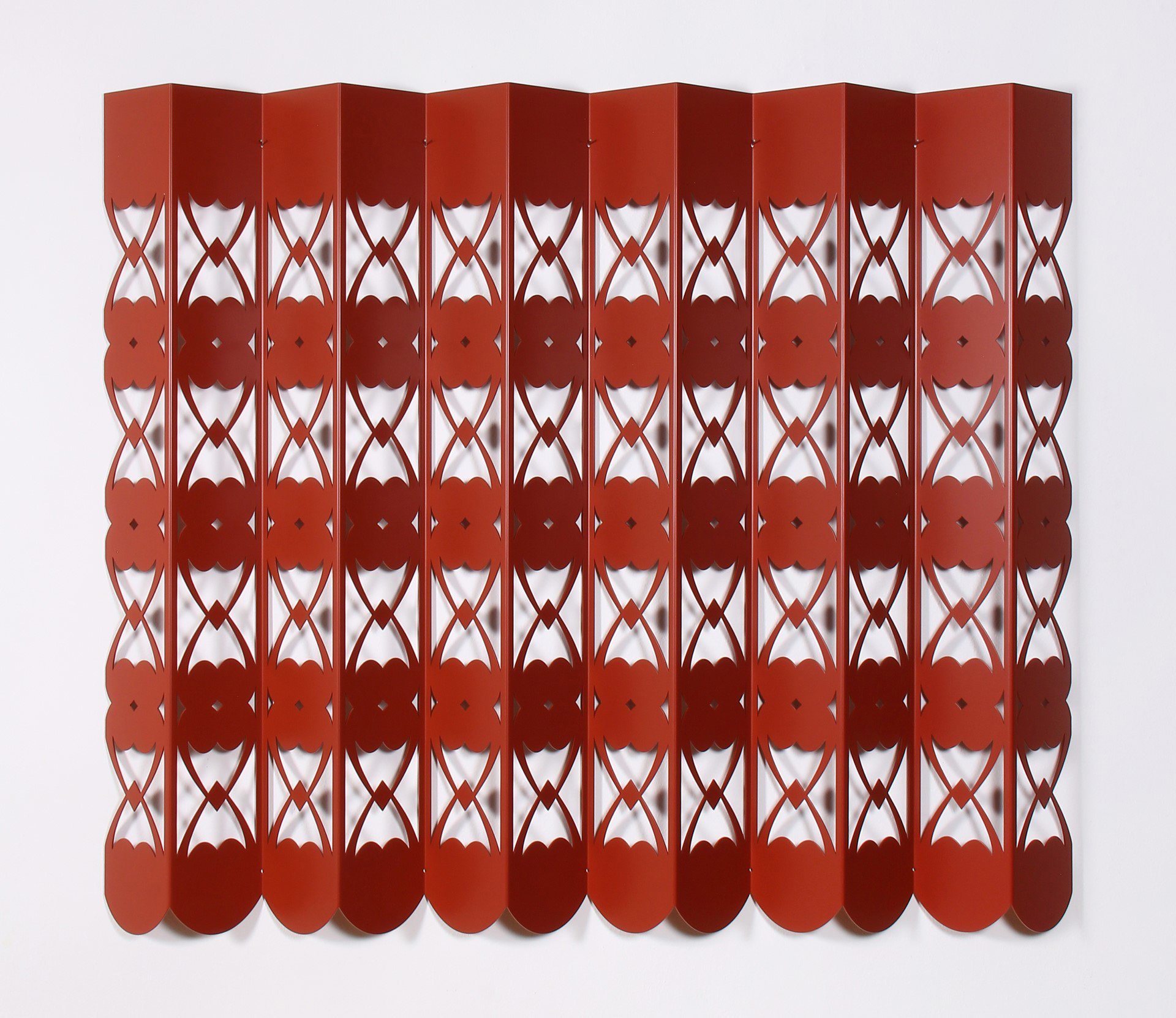
(Milford Galleries)
Spanning 2010 to 2023, "From Me To You" is a selection of Lonnie Hutchinson’s signature cut-out works. The artist has been working with heavy builder’s paper for decades, and sitting in contrast to the softness of the black tar paper, are some quite recent weatherable aluminium pieces, like Aroha (2022) pictured here. Of Ngāi Tahu and Samoan descent, Hutchinson’s work integrates formal design elements inspired by kōwhaiwhai and related concepts, like whakapapa.
The works on show are representative seasons of the artist’s practice, and each work includes connections to particular places, things and ideas.
In Strata (2017), for example, Hutchinson refers to the idea of layers on a cosmic and historical scale: the archaeological knowledge of histories of peoples that can be found in layers of the earth, as well as the Māori conception of a layered heavens.
These sculptural 3-D drawings are generally uniform in compositional terms, and both repetition and pattern present a cohesive idea and provide a field of vision that draws the viewer in. Impressive in scale and detail, each work mirrors a shadow play of light against the gallery wall behind it and these in-between spaces change with the light.

(Dunedin Public Art Gallery Rear Window Programme)
The botanical term nyctinasty refers to the diurnal activity or movement of plants in response to light. When a flower’s petals close up at night, for example.
For Gunditjmara and Djabwurrung artist Hayley Millar Baker, this daily rhythmic sensitivity to light reflects a spiritual disposition that is shared in the form of a poetic autobiographic narrative.
In the opening sequence of the work, we are introduced to a domestic setting as a context in which to also consider the topic of spirituality. There is a wedge of light under a door and a threshold to signify a passage between realms.
The protagonist, representative of female power, enters a kitchen and pours a glass of water.
Outside is a smouldering brazier filled with leaf litter and flower petals.
The protagonist collects material from the fire and places it in a mortar.
Back inside the house, this mixture is slowly formed into a carbon paste that she then coats her hands with.
The video sequence concludes with a static image of the woman sitting, composed and centred in the frame.
A multitude of hands suddenly appear to rest upon her shoulders.
This conclusion is a subtle yet direct reference to an ambiguous beyond.
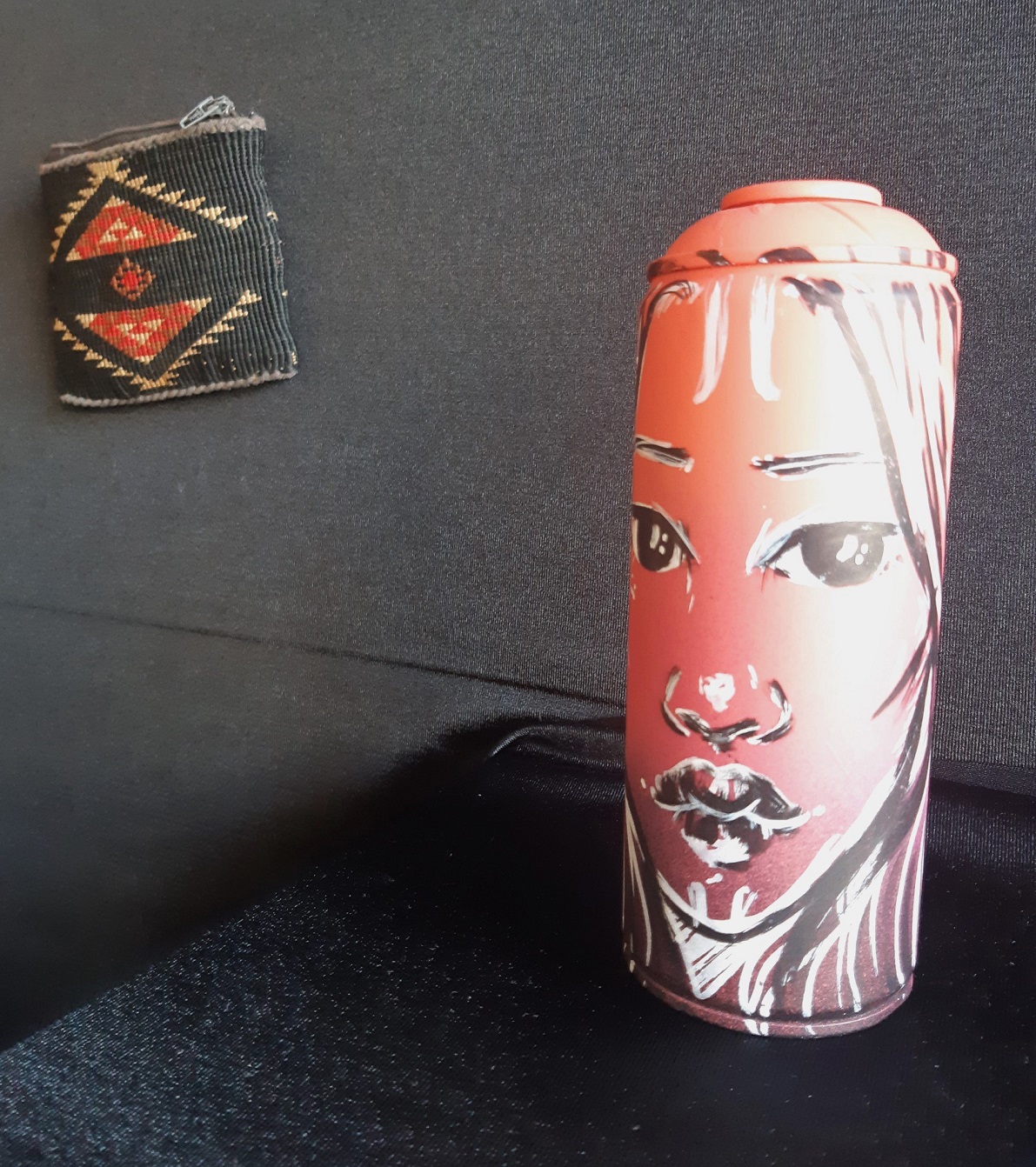
(Tini Whetū Project Space)
Drawn from curator Piupiu Maya Turei’s personal collection, this exhibition is a reflection on art collections and the circumstances that shape them and make them meaningful, especially the art we live with.
In the form of a single installation, works on show include a punchy sculpture by multimedia artist Melanie Tangaere Baldwin (Ngāti Porou); a framed drawing of poetic field notes on seasonal bird life by Ōtepoti-based artist Madison Kelly (Kāi Tahu, Kāti Mamoe, Pākehā); a beautiful double-spiralled tuna/eel drawing by Joy Auckram; and a painted portrait by street artist Nerys Ngaruhe (Ngāi Tahu, Welsh) on a recycled spray paint can, an object perhaps more commonly found in the artist’s tool-kit.
A generational acknowledgement of Turei’s mother and grandmother is also present in two hand-made tāniko pieces, a belt and a wallet.
The meaning of an artwork can be activated through interaction and interpretation.
Ngaruhe’s Hine Maumahara (Waipuke) (2021) has been titled by the curator independently from the artist, and in memory of shared histories and the significance of floodplain land in the Wairarapa.
Each piece on show is thoughtfully contextualised in a similar way, grounded by critical and interpersonal narratives and connections.
By Joanna Osborne









